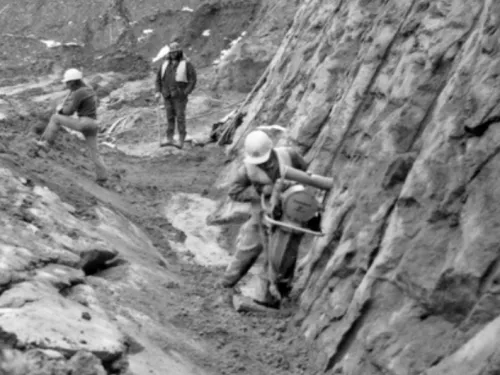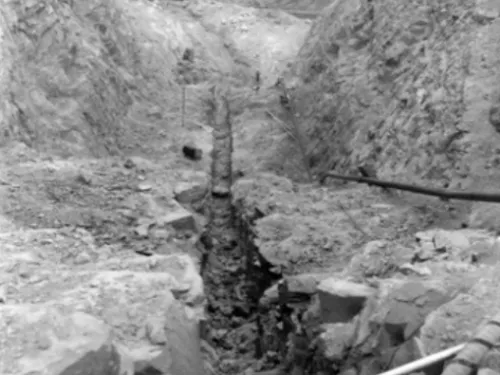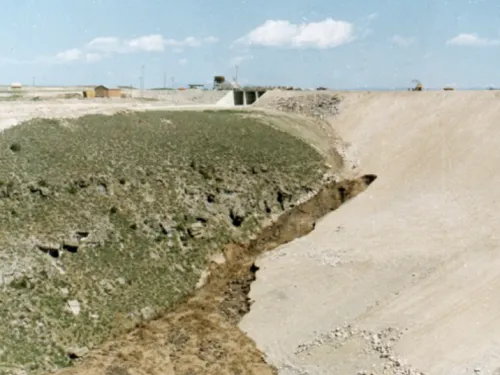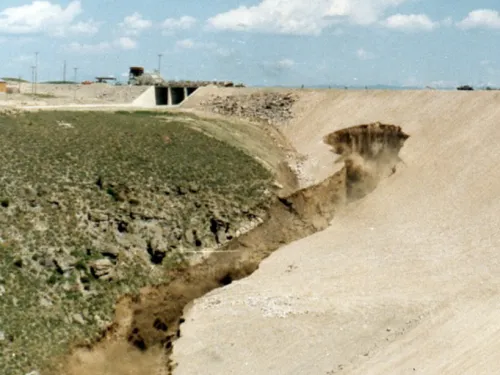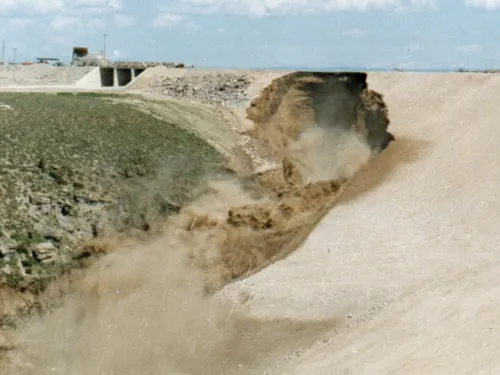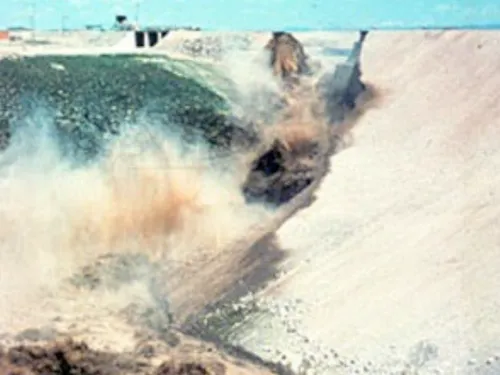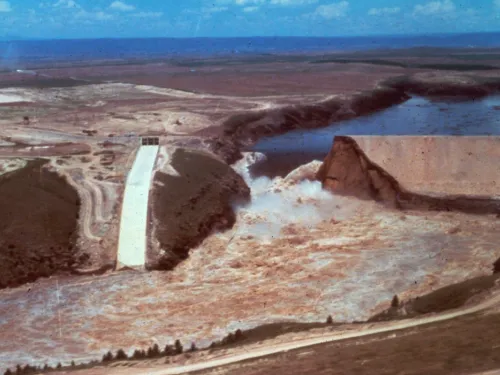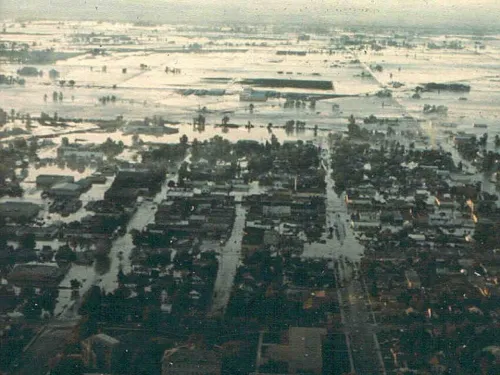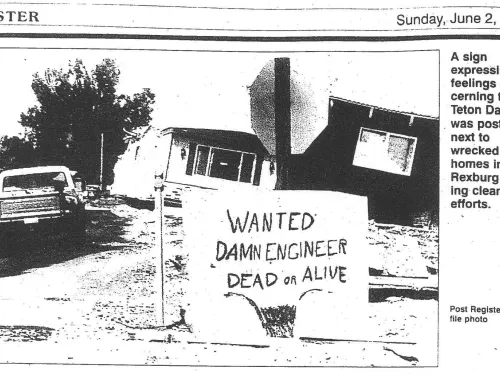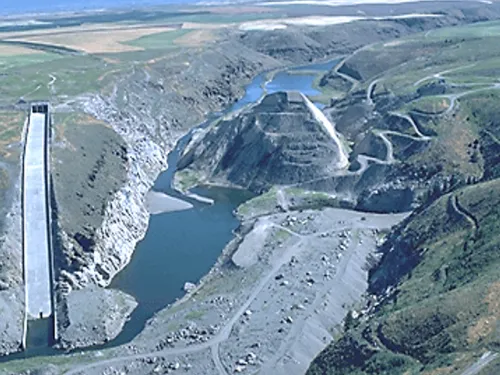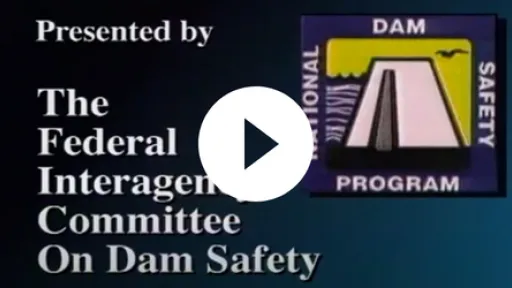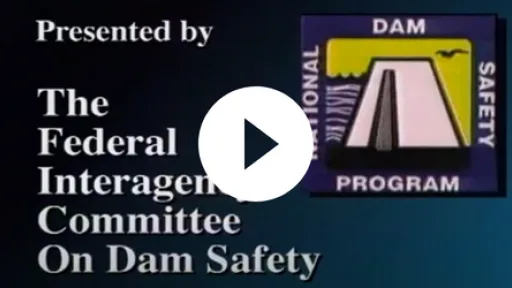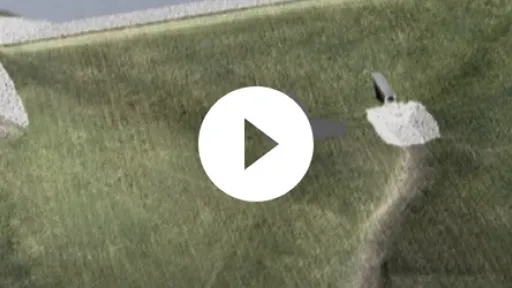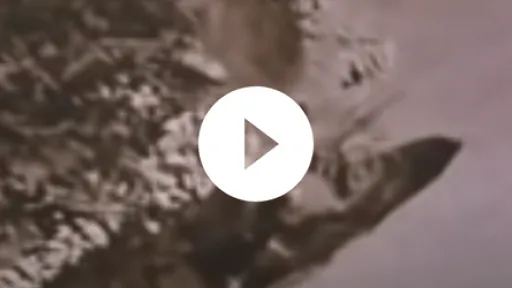Teton Dam (Idaho, 1976)
Teton Dam was located in southeastern Idaho about 15 miles from Rexburg in the valley of the Teton River. The dam and its reservoir were the principal elements of the Teton Basin Project designed by the Bureau of Reclamation to control flooding as well as provide a source of hydropower, irrigation, and drinking water. Construction on the Teton Dam, reservoir, and powerhouse began in 1972 and by November 1975 the zoned earthfill embankment was essentially complete with a structural height of 305 feet and a crest length of 3,100 feet. Less than one year later, the dam experienced catastrophic failure on June 5, 1976 during its first filling. Failure of the Teton Dam and subsequent draining of the reservoir caused the deaths of 11 people and approximately $400 million in damages.
On June 3, 1976, two small seeps were observed at the downstream toe of the dam which released clear seepage and measured less than ¼ cfs. When the rest of the dam was inspected, however, no further evidence of seepage was noted. Only two days later, in the early morning hours of June 5, 1976, 20 to 30 cfs of clear seepage was observed exiting rock joints near the right abutment of Teton Dam. Shortly thereafter, the seepage became muddy and a sinkhole developed on the downstream slope of the embankment dam. Flow developed from the sinkhole and dozers were sent in an unsuccessful attempt to fill the resulting eroded area with riprap. Flow through the open void that developed by scour (a piping mechanism) continued to increase and the embankment eventually breached at the dam crest around 11:55 a.m. (only several hours after the first sign of muddy seepage). The resulting rapid release of the entire contents of the reservoir flooded five counties, inundated over 300 square miles, and traveled a distance of 155 miles downstream.

Investigations of the Teton Dam failure attributed the catastrophe to a series of design and construction related deficiencies. These inadequacies related primarily to the foundation treatment at the dam and adherence to the overall construction schedule. It was determined the most probable physical failure mode was cracking of the dam’s impervious core due to internal erosion initiated by hydraulic fracturing of the key trench fill material.
Teton Dam was located in an area with highly permeable foundation materials. During investigation of the failure, it was discovered that proper treatment of such foundation material was not implemented. It appeared that the dam’s designers did not take the site specific geological conditions into account when developing the structure. This oversight was exacerbated by the lack of communication between the design and construction engineers about the proper preparation of the dam foundation. As a result, not only was the foundation treated inadequately, but that treatment was also inconsistent. Although a key trench was constructed in an attempt to prevent seepage through the pervious embankment, the slush grouting at the key trench was insufficient. In addition, slush grouting was inexplicably stopped once El. 5200 was reached. The post-failure review panel also determined that the rock surface at the right abutment was not adequately sealed under the dam’s impervious core. Working together or alone, either of these foundation design deficiencies would have provided optimal conditions for internal erosion of the core.
Although a three-gated spillway existed at crest elevation near the right abutment at the time of failure, the dam’s powerhouse, auxiliary spillway, and outlet works remained unfinished. Construction delays caused deviation from the original schedule but the first filling of the reservoir was not postponed. Therefore, when the unexpectedly rapid filling of the reservoir occurred, there was no operable low level outlet works for dewatering the reservoir. Although investigations of the incident proved that failure of the dam due to improperly treated foundation materials was most likely inevitable, the lack of a proper reservoir low level outlet works contributed to the severity of the failure and reservoir release. Had the first filling been managed using a low level outlet works, the volume of water suddenly released from behind the Teton dam could have been reduced. Twenty-four hour monitoring of the dam and reservoir during its first filling may have also contributed to the lessening of downstream consequences.
Other factors related to the failure of the dam included a lack of external review of the project plans and specifications that may have discovered some of the design deficiencies. Furthermore, the dam was not designed with any type of secondary defenses against seepage and relied fully on the grout curtain and key trench.
References:
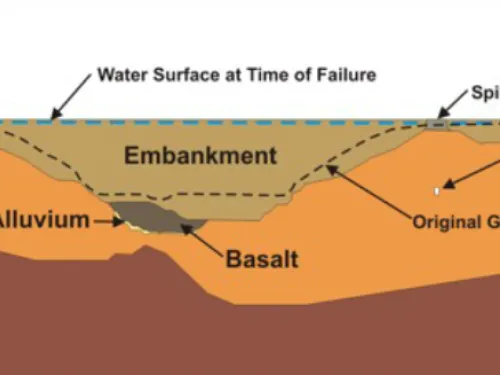
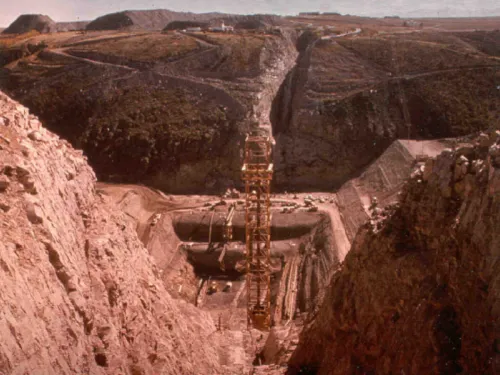
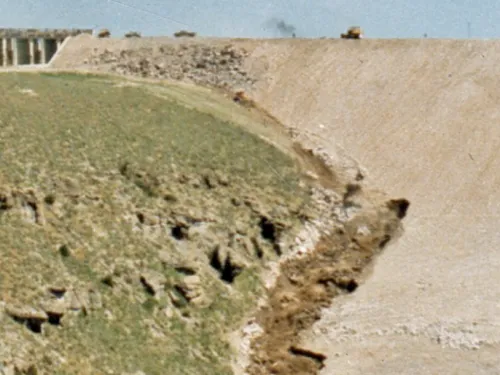
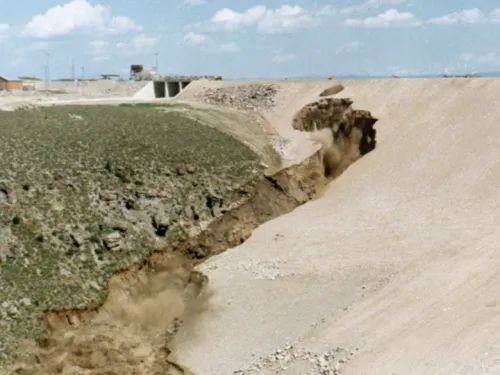

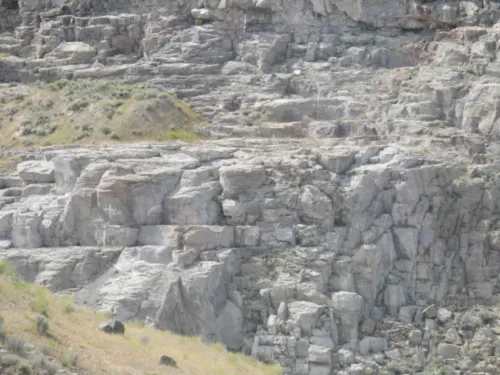
Lessons Learned

All dams need an operable means of drawing down the reservoir.
Learn more
Dam failure sites offer an important opportunity for education and memorialization.
Learn more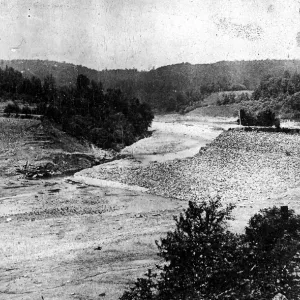
Dam incidents and failures can fundamentally be attributed to human factors.
Learn more
Early Warning Systems can provide real-time information on the health of a dam, conditions during incidents, and advanced warning to evacuate ahead of dam failure flooding.
Learn more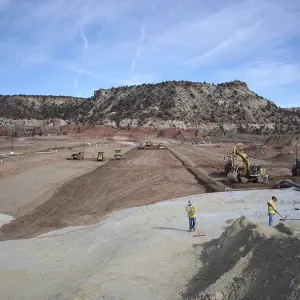
High and significant hazard embankment dams should have internal filter and seepage collection systems.
Learn more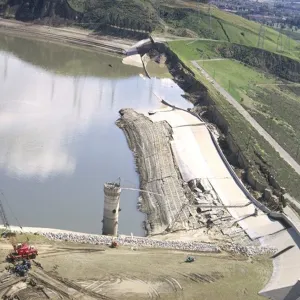
Stability of the dam foundation and other geologic features must be considered during dam design.
Learn more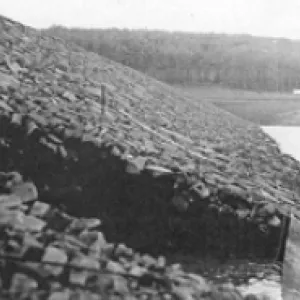
The first filling of a reservoir should be planned, controlled, and monitored.
Learn more
The study of past incidents and failures aids in the assessment of existing dams.
Learn more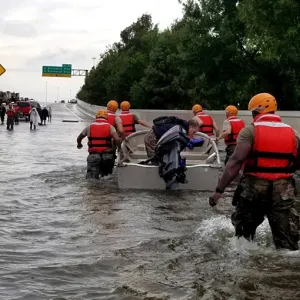
Timely warning and rapid public response are critical to saving lives during a dam emergency.
Learn moreAdditional Lessons Learned (Not Yet Developed)
- External independent peer review of designs and decisions is an effective means of providing quality assurance and reducing the risk associated with design oversights and deficiencies.
- High and significant hazard embankment dams should have internal filter and seepage collection systems.
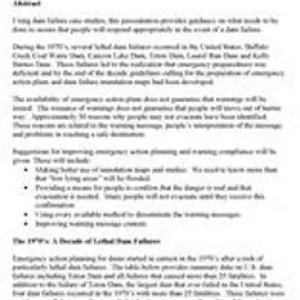
Avoiding Disaster: Assuring Warning Compliance
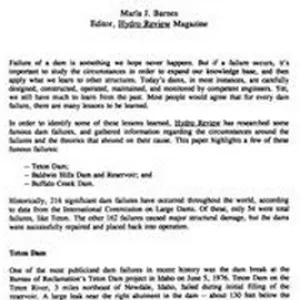
Famous Failures: Revisiting Major Dam Catastrophes
Fontenelle Dam, Ririe Dam, and Teton Dam: An Examination of the Influence of Organizational Culture on Decision-Making
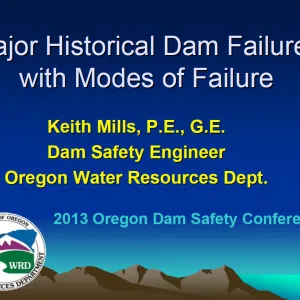
Major Historical Dam Failures with Modes of Failure
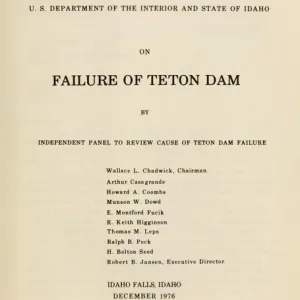
Report to U.S. Department of Interior and State of Idaho on Failure of Teton Dam
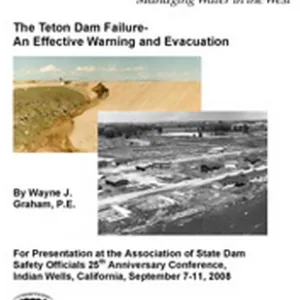
The Teton Dam Failure: An Effective Warning and Evacuation
Additional Resources not Available for Download
- VandenBerge, D., Duncan, J., & Brandon, T. (2011). Lessons Learned from Dam Failures. Virginia Polytechnic Institute and State University.
